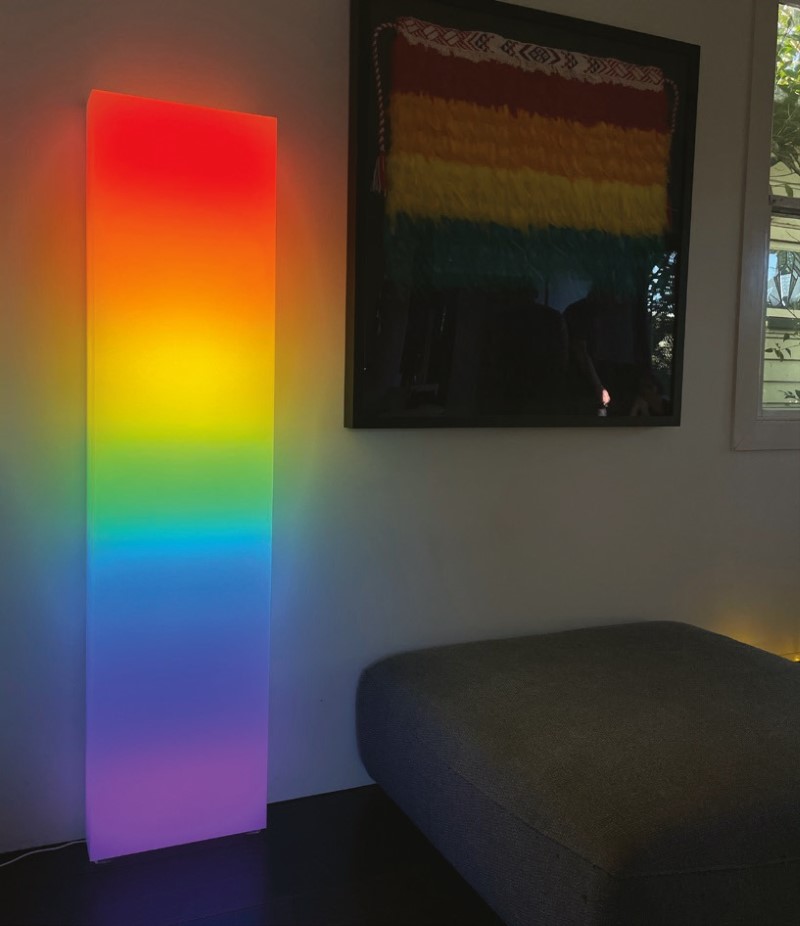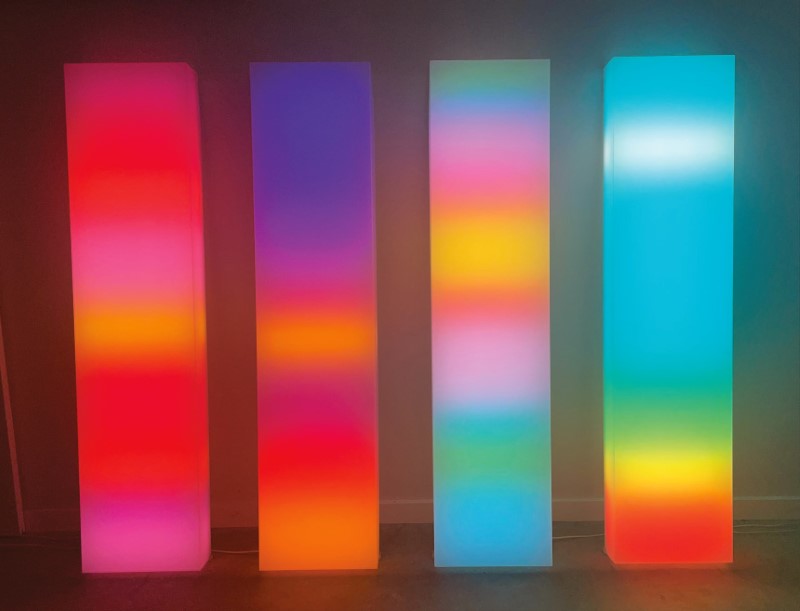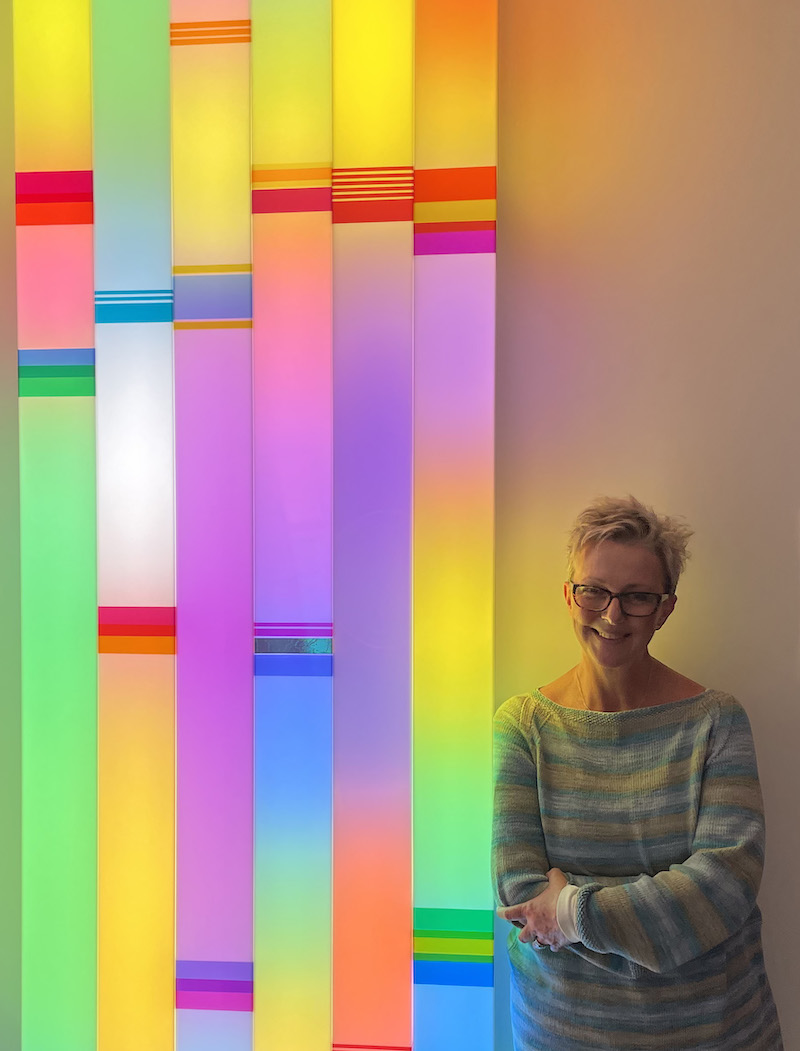Harnessing the transportive qualities of light and colour, the works of New-Zealand based artist Trish Campbell aim to encapsulate a feeling or emotion within a set space. Her highly saturated colour fields blend and clash within acrylic shells, serving as a source of nourishment as well as an artwork.
This restorative function is key to her practice, which finds its roots in her battle with coeliac disease. “Initially, my art was solely a personal endeavour to lift myself out of the suffering I was living with,” says Campbell. “Studying art was a way to go beyond myself while also strangely drawing on every element I had available.” Having initially struggled to get a concrete diagnosis, her artistic creations were designed to address her own private desire for a curative experience. She quickly found that her works inspired a similar but individualised response within their viewers, and has worked towards creating an oeuvre that provides a transformative and healing encounter for her audience.
Her practice is heavily influenced by the Light and Space artists of the 1960s, whose experiments reached beyond traditional art forms and media to revolutionise the art world. But while these mid-century artists produced works for the grand scale of the gallery, Campbell’s art is not designed to solely suit the white cube. Instead, her art is designed at a more human scale, seeking a personal interaction with the individual, inhabiting a fixed space that is equally suited to the domestic domain.
Finding inspiration for individual works is often the hardest part of the artistic process, distilling grand ideas into a material form.
For Campbell however, anything that interests her is enough: bubbles floating above your kitchen sink, the jingle that plays after your dishwasher has completed, her mother’s cancer diagnosis, food allergies. From these moments, great and small, she pieces together a colour combination that speaks to the essence of her experiences.
“With light works it is always difficult to represent a theme which specifically relates to subject matter,” she says. “Instead, it is an abstract view which is represented by light and colour, and driven home ultimately by the viewers’ reaction in that time and place.”
Her latest project, Equanimity – which has been selected as a finalist for New Zealand’s National Contemporary Art Awards – epitomises the core concerns of her practice.
Built to relate directly to the artist’s body dimensions, the four light fields are designed to sooth the anxieties so prominent in a post-pandemic world. With each monolith representing a season, it aims to instil a sense of joy and wonder in the viewer, maintaining a sense of optimism in the face of the passing of time.
Theatrical and euphoric, Campbell’s constructions of light are intended to elevate their viewer out of the everyday, both soothing and invigorating through their carefully selected colour schemes. Life can be hard, especially at this moment in time, and Campbell’s works prove to be the perfect tonic.
Featured image: artist Trish Campbell. Courtesy: the artist.





